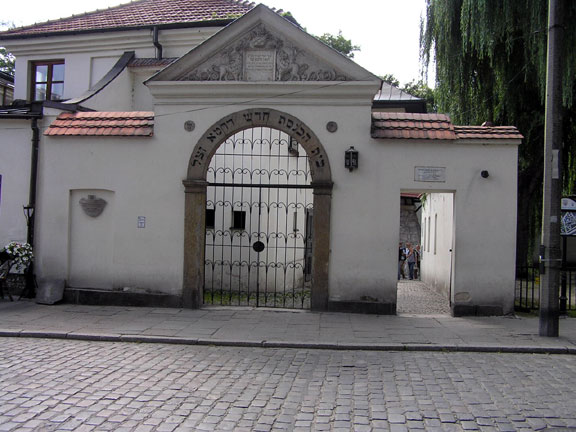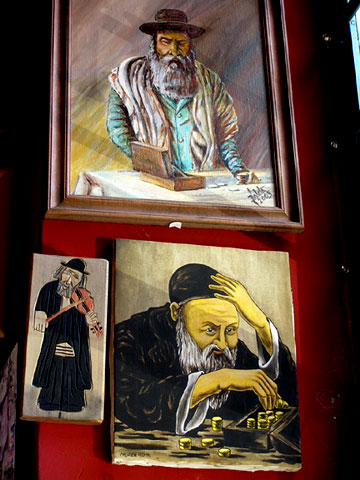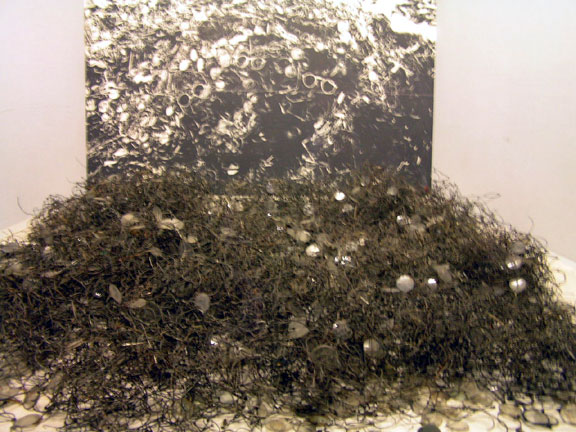Jennifer
and Bob visit Krakow
August, 2005
These are some images from Jennifer and Bob’s visit to Krakow (and Auschwitz) in August of 2005. While there were many other experiences, these pictures capture some of the odd Jewish presence in a Poland that once had a huge Jewish population and now has hardly any Jews in it - 180 Jews in Krakow, for example. Yet Jewish things are currently objects of revivals and celebrations, by Poles, causing no little confusion for a Jewish visitor.

A poster on a dilapidated wooden fence in Kasimierz, the old Jewish ghetto in Krakow. The synagogue referred to has no services and is a museum.

The Rema Synagogue in Kasimierz, built around 1550 by Rabbi Moses Isserles (known as the Rema, a Hebrew acronym of his name). He is the direct-line ancester of Bob’s family and is widely recognized as one of the two most influential rabbis ever. His writings are studied daily by Orthodox Ashkenazi students and scholars. This is the one active synagogue in Krakow. On a Saturday morning, when Bob attended services, they could not maintain a minyan (10 men) and finally gave up trying to hold the service.

Grave stone of the Rema in the cemetery next to the Rema Synagogue. Daily there are admirers who come to this stone to pay their respects and leave little folded notes or prayers under the caps on the stones, as Bob did. See below.

The back of the Rema
grave stone, with notes.

“Jewish” “shops” across the street from the Rema Synagogue.

A souvenir shop, in the beautiful Cloth Building in the old town square in Krakow.

Outdoor art market on the old city wall of Krakow.

Paintings on a wall in an art shop near the old town square in Krakow. Images such as these were also available in wooden statuary such as shown in the souvenir shop. They are said to bring good fortune and success in financial affairs.

Glasses meticulously collected from Jews before they were gassed in Auschwitz, where most of the Krakow Jews were sent. The photo is of a display in Auschwitz, which we visited.
While in Krakow we attended a Klezmer concert with a sold out audience. Both the musicians and the audience were Polish non-Jews, excited about re-discovering the rich Jewish culture. A 60-year-old Jewish man, Henryk Halkowski, we saw at the synagogue, and then met by chance at lunch, told us wryly that many Christian Krakovians are suddenly finding their lost Jewish ancestry and are proclaiming they have, for instance, ten percent Jewish blood. As one of Krakow’s 180 Jews, Henryk announced to us that he’s decided to retire from being a Jew. We gathered he’d had much attention as a token.
Would
you like to comment on our experience? Compare yours? We would be happy
to post your comments below. Mail to frankro@robertfrank.net.
—Bob Frank and Jennifer Coplon